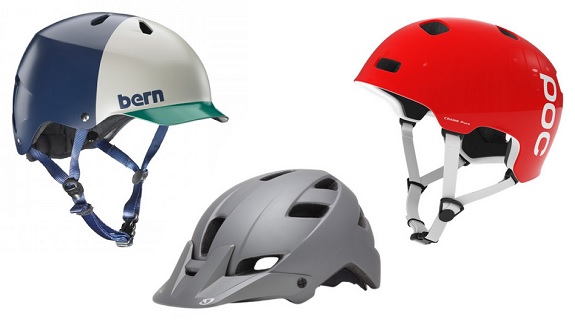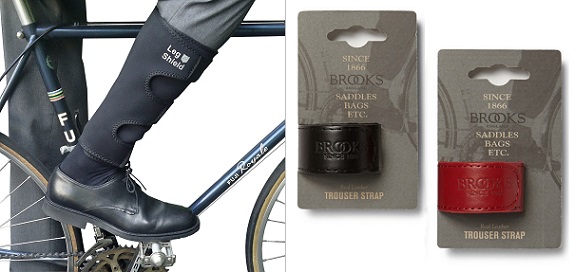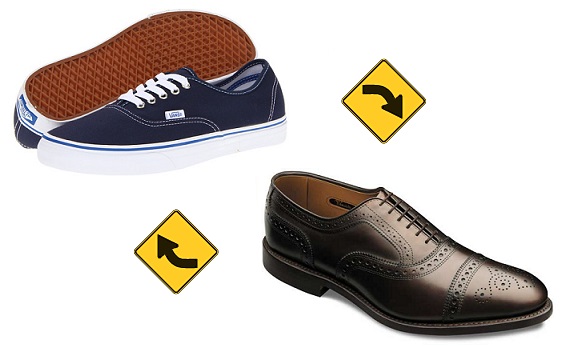Bike commuting can be daunting. Just jumping in the car is really, really easy. Going by bike takes a bit of thought and planning. But not only does the exercise hold some appeal — you might even find that it’s faster. Add in the time of the daily exercise routine (or procrastinating and avoiding said routine) and it’s almost definitely faster. And with a few tricks, you can keep it stylish as well.
1. Safety First
Let’s face it, the best-looking option is to go helmet-free. Now, there are a few reasons to opt for this, but if you’re going to be on the road with cars during the commute, going helmet-free might not be the best idea. The good news is that newer, skateboard-inspired helmets are pretty cool looking. Sure, you won’t look like a pro in search of a peloton, but you won’t look like you’re out trying to score some HGH or steroids on the street either. Probably best to try these on in the store if you don’t know your size, but if you’re comfortable measuring your head circumfrance, check out the POC Crane Pure helmet. It’s got good looks and will keep your brain contained. Want a deal? Check out the Bell Segment, currently priced at only $20 (normally $55).
 Not as well ventilated, but doesn’t have that “where’s the peloton?” look.
Not as well ventilated, but doesn’t have that “where’s the peloton?” look.
Bern Watts – $59.99, Giro Feature – $60 – $75, POC Crane – $69.95
2. Sweat Second
The biggest downside of bike commuting is also the big upside — the exercise. You’re going to sweat if you hammer. Now, some of you may have enlightened employers that provide showers for us sweaty cyclists, but most don’t. The best strategy I’ve used is what I call the Coast Commute. In the morning, when you’re on your way to work, you don’t rush. You don’t sprint to make the lights. You just pedal and coast and roll to work. With the air-cooling you’re creating, sweat production should be pretty low, and if you live uphill from the office, you might not have to pedal at all. Serenity now, man. Why show up to work amped on adrenaline anyway? Pick a pleasant route and don’t rush. The morning leg is all about calm transportation.
Speaking of legs, keep your pants out of your chain with one of these guys. Not enough protection? Try this full calf version. Want something in leather? Try this pair, which allow you to coordinate with your shoe leather.
 Save those pants from your chewing and spitting chain:
Save those pants from your chewing and spitting chain:
Full Calf Leg Shield – $16.95, Brooks England Leather Trouser Strap duo – $42
On the way home, you hammer. Change into shorts and race the cars. Take the long route and show up at home a sweaty mess, done with they day’s work and exercise. You should probably open a beer at this point. Any frustrations from the office will be forgotten.
3. Security Third
If you live in a large-enough city, your bike is probably going to get stolen. Best to accept this fate now. I used to work with a guy that had a stockpile of beater bikes that would one-by-one get picked off. They were terrible, shitty bikes, and they were always, eventually, stolen. Accept this, but fight it. My buddy, knowing his bike’s days were numbered, never invested in much of a lock. I err on the strong lock side a little heavier. Get something strong and secure and lock your bike frame and wheels smartly, or better yet, wheel your bike into the office.
 Almost.
Almost.
The basics of security: Don’t lock your bike to a top-free pole that your bike can simply be lifted off of. Don’t thread your lock through a single spoke, making your entire bike’s security dependent on a tiny strand of wire not being cut. But most importantly, don’t over-equip for bike commuting. Don’t ride too nice of a bike. There’s some sort of inverse relationship at work where the nicer and lighter the bike, the heavier the lock. Got a basic beater? Well, this 3-pound lock model will work. Commuting on your sub-20-pound bike you’re going to be racing on this weekend? Your lock weighs 9 pounds.
4. Balance Good looks w/ functionality
Biking to work takes some getting used to, but you’ll eventually find yourself a groove that works. If you normally wear leather-soled shoes, they’ll be tough to pedal in, so grab a pair of BMX-inspired Vans for the ride and either transport your dress shoes, or, leave a pair or two of nicer shoes at the office. Same with a blazer — stash one at work so you’re ready for anything. You probably won’t bike everyday, so use those days to refresh your office clothing stash. If you’re already sporting something nicer, like a Filson messenger bag, use that on your ride. But if you’re looking for something with a little more bike cred, consider grabbing a bag an actual bike messenger would use from Timbuk2. Maybe not the sexiest bag, but they’re made for this sort of thing.
 The “reverse Mr. Rogers.” A shoe change at work might be key.
The “reverse Mr. Rogers.” A shoe change at work might be key.
So that’s it. Not too daunting, is it? You can be safe and stylish in a helmet. You don’t have to show up to work in the morning heaving with exhaustion and pouring sweat. With a bit of luck and a lock, your bike will stay safe and unstolen. And with a smart stash of clothing, you’ll have no problems staying stylish. Give the ride a try this casual Friday.
Your turn bike-commuters. Any other tips? How do you keep looking your best when biking to work? Leave it all in the comments below.
About the author: In addition to being the guy behind the tech at Dappered, Paul runs the website Trail & Tarmac with his cycling friends, a site dedicated to scouring the web for the best cycling gear deals. photo credits: guy on bike, wheel